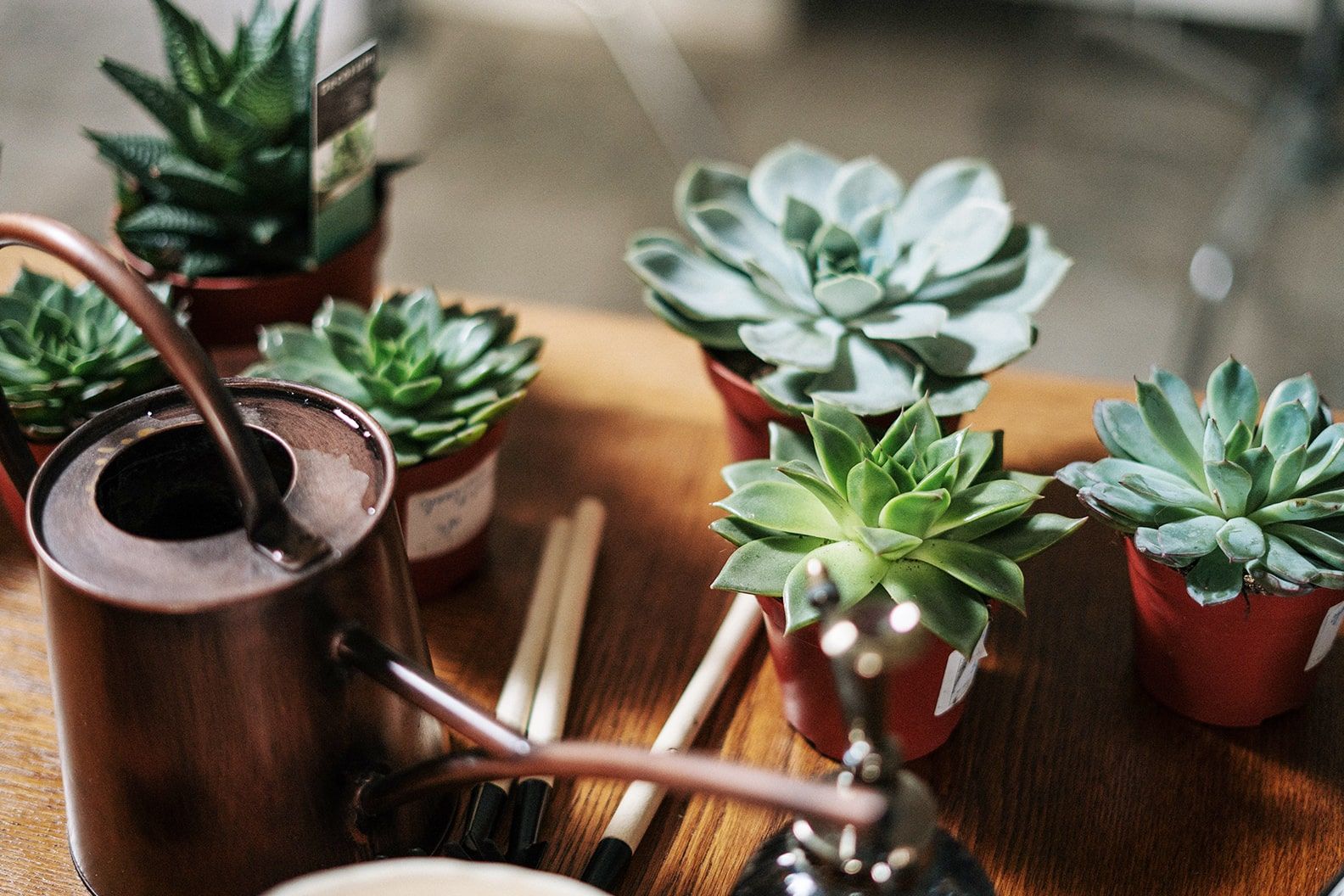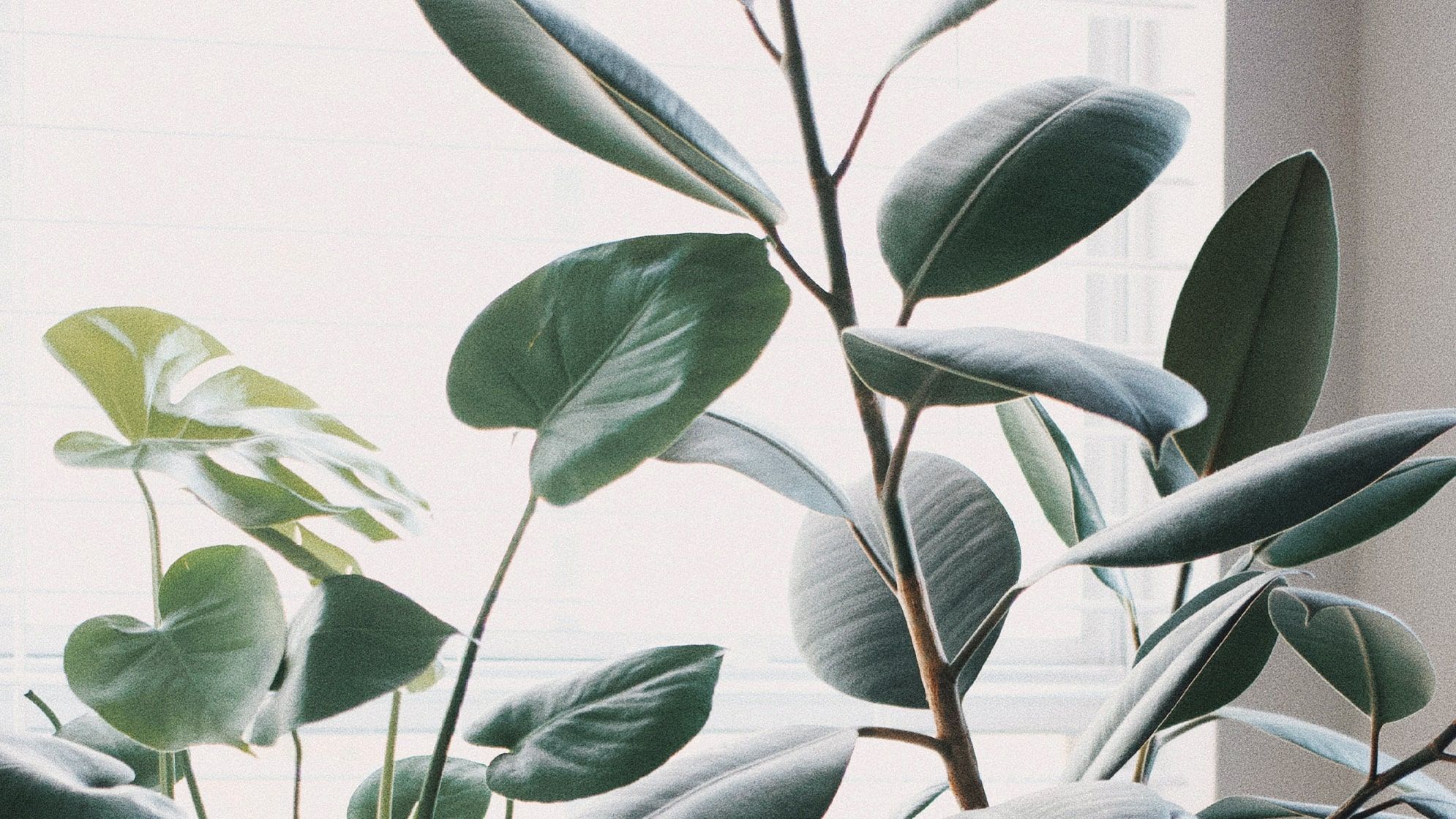Complete guide to succulent care
If you’re new to houseplants, or if you’re looking for a thoughtful gift, succulents are a great choice. They don’t need much looking after and look gorgeous on their own or as part of a bigger collection.

Easy to please and low maintenance, succulents like Suri, Lyla or our Large Succulent Set are a great way to bring some colour into your home if you’re short on space.
Here are our best succulent care tips in a nutshell:
- Water infrequently. They’re used to desert-like environments, so less is best.
- Keep them in direct sunlight. A well-lit kitchen or bedroom will do.
- Keep them warm. Avoid chilly spaces or anywhere too draughty.
- Avoid glass jars and containers without a hole at the bottom. A drainage hole helps excess water to escape.
About succulents
Succulents originally come from dry, desert-like environments like the European Alps, Central America and South Africa. Amazingly, there are over 10,000 types – all with different colours, textures and sizes.
Not only are they beautiful to look at, but their thick, fleshy leaves, they’re also able to store their own water, so it’s best to keep watering to a minimum.
For extra love, give your succulents a feed every now and again with a succulent or cacti-specific fertiliser. Once a month in spring and summer is best.

How often should I water my succulent?
A good rule of thumb is to water just a little at a time when the soil is completely dry.
If you do overwater, you might see little blisters pop up, white patches appearing on the leaves, or rot forming. Not ideal. Some damage can be reversible – if you catch it quickly and let the soil thoroughly dry out.
With good succulent care practice, you’ll be able to avoid all that from the start.
The best way to water your succulent is to:
- Lift the nursery pot from the decorative pot
- Pour a little water over the soil – making sure you avoid the leaves
- Wait until the water has fully drained before putting the nursery pot back in the decorative pot
- Wait a few hours, and pour away any more water that might have appeared
A clever succulent care trick to avoid water logging is to add some gravel or sand to the bottom of your decorative pot. That’ll help with drainage.

How much light does my succulent need?
Native to warm countries, succulents love direct light. Suri needs about six hours of sunlight per day – so she’ll live happily on a shelf or table near a window. With the right succulent care, you might even see her colours change a bit. It’s called ‘blushing’. Not because she’s coy, but because she’s grinning ear-to-ear.
Just avoid keeping her in the full blast of direct sunlight all day, as this could burn her.
Here’s how you’ll know if she’s been exposed to too much sun:
- You might see beige or brown patches appear - which is a sign of burning
- You might see the green pigment start to fade
- Worst case: you might notice overall dryness, with some leaves turning black and falling off
For extra special succulent care, rotate your plant every now and then. This helps her get light all round, not just on one side.

What’s the best kind of soil for succulents?
Succulents do best in well-drained soils; they’re designed to cope with drier environments. But if you notice roots growing out of the drainage hole, it means they’ve run out of space to grow. That’s a good sign you need to repot.
Gently squeeze the sides of the pot to loosen the soil, and carefully wipe away any clinging dirt from the roots. Then pop the succulent in a slightly larger nursery pot and add a little topping of soil to secure it in its new home. It’s best to avoid regular potting soil as it doesn’t drain well - choose a cactus soil, or even mix your potting soil with sand. Find out more about repotting here.

In this article
Rewild your inbox
Plant tips. Special offers. No spam.
You might like

Complete guide to cactus care
Cacti make a dramatic statement with their looks, not their care instructions.

Complete guide to indoor light
Find the right plants for your home

Root rot: How to spot it and fix it
Act fast and your plant may still be saved















